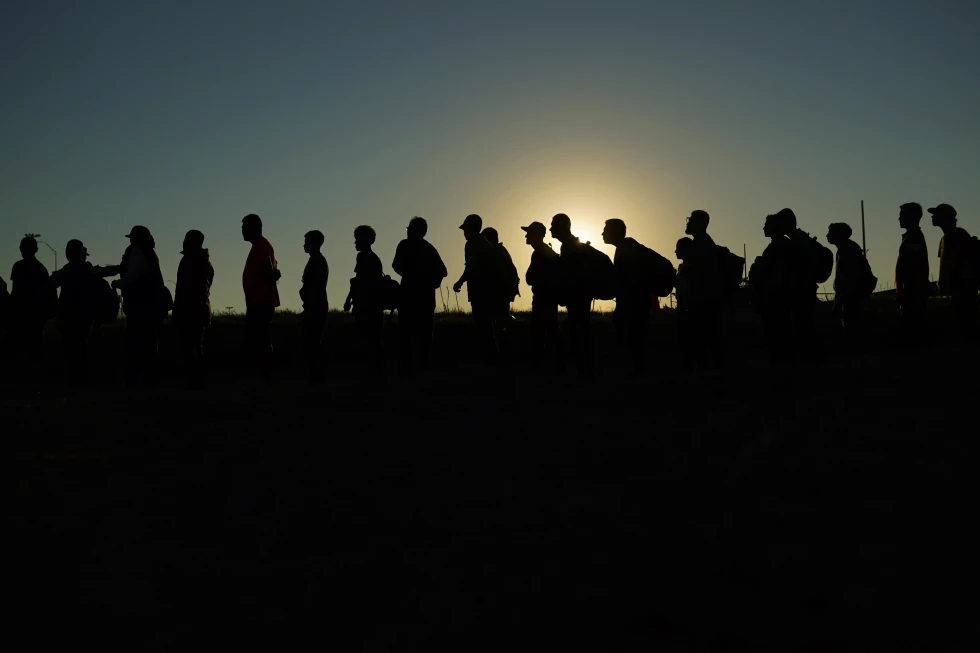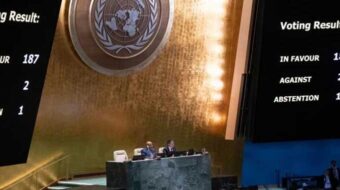
Undocumented Migrants crossing into the United States disturb U.S. politics. Cuban migrants, part of the mix, hard-pressed like the others, but privileged, are provocative in their own way.
For many years and even now displaced Cubans are portrayed as victims of a brutal dictatorship and as recipients of “rescue” by freedom-loving Americans. Cubans who have special skills are often lured out of the country with promises of “the good life” in the U.S. and with the intent of hurting Cuba as it loses people with skills needed at home.
Changing U.S. regulations and new migration patterns highlight the anomaly of special U.S. dispensation for migrating Cubans.
U.S. district judge Drew Tipton on March 8 ruled that migrants from Cuba, Venezuela, Nicaragua, and Haiti may enter the United States via humanitarian parole. The plaintiffs had been 21 Republican-governed states that had unsuccessfully claimed that immigrants enabled by humanitarian parole required services they could not pay for.
Under humanitarian parole, a program the Biden administration announced on January 6, 2023, migrants entering from those four countries are assured of legal residence for two years – renewable at that point – and a work permit.
Humanitarian parole is limited to 30,000 immigrants arriving every month from the four countries. Migrants need sponsors in the United States.
Instituted under the Immigration and Nationality Act of 1952, the program allowed entry into the United States of refugees from the former Soviet Union, Afghanistan, Ukraine, and other countries. This time, 138,000 Haitians, 86,000 Venezuelans, 58,000 Nicaraguans, and 74,000 Cubans – a total of 357,000 migrants –entered via humanitarian parole as of February 2024.
The would-be migrants from the four countries travel by air to ports of entry inside the United States, pass quickly through immigration screening, and proceed to new homes. Before leaving their home country or a third country, they had found sponsors, presented documentation to U.S. immigration officials, and been approved– all via the Internet.
An analyst claims that “Combined with the other parole process at the U.S.-Mexican border …, parole has transformed most migration from [the four] countries from mostly illegal to mostly legal in less than a year.” And, “This policy has transformed migration to the United States. By July 2023, parole had already redirected about 316,000 people away from long, perilous treks through Mexico.”
The Biden administration adopted the parole system in part because of difficulties associated with repatriating migrants from the four countries. They stemmed from a U.S. lack of full diplomatic relations and repatriation agreements with those countries. Normal relations with Mexico and the northern Central American countries allow for more convenient U.S. handling of refugees from those countries.
Humanitarian parole came into effect after the administration’s repeal of Title 42, its role having been to exclude migrants because of health risks. Many migrants saw an opening and attempted a border crossing. But many of those from the four countries opted for humanitarian parole.
Scoring political points
By diverting migrants to other locations and relieving pressures along the southern border, the administration might have scored political points, had not administrative delays with humanitarian parole led to big backlogs of migrants waiting to enter.
Cuban migrants to the United States are a special case. Immigration officials on the southern border have long used an “Order of Release on Recognizance,” the so-called “Form I-220A,” to release border-crossers from custody. Officials dealing with Cubans being released ended up accommodating Form I-22A with the objectives of the Cuban Adjustment Act (CAA).
The aim of that legislation passed in 1966 was to legalize the already large population of Cubans who had arrived in the United States after Cuba’s Revolution in 1959 and the many who would follow, all presumed to be enemies of the Revolution. The CAA enables newly arrived Cubans immediately to receive social services and a work permit and, after a year, to be granted permanent resident status, a pathway to citizenship.
No other migrant from any other country is so favored. The displaced Cubans are portrayed as victims of a brutal dictatorship, and the U.S. government and people as their rescuers.
To apply the CAA to the fate of those Cuban migrants released from custody according to Form I-220A is now off limits, as per a ruling by a U.S. immigration court in September 2023. But now they can make use of humanitarian parole.
Curiously, the governments of three of the countries whose migrants benefit from humanitarian parole – Cuba, Venezuela, and Nicaragua – are socialist in nature, and the U.S. government regularly harasses them.
Humanitarian parole entices migrants to the extent that great numbers of citizens depart for the United States. As a result, the human resources of Cuba and the other countries are depleted so much so as to impinge upon the countries’ future development.
The U.S. government with its humanitarian-parole policy, at the very least, has stumbled upon a tool that contributes to destabilizing three governments that variably represent the threat of a good example – Cuba’s government more than the others.
The 425.000 Cuban migrants who arrived in the United States in 2022 and 2023 constituted the greatest exodus since the one following the victory of the Revolution in 1959. Factors pushing Cubans to emigrate are low pay, inflation, and shortages of food, electrical power, medical supplies, and drugs. These factors reflect the impact of the U.S. economic blockade, as aggravated by the effects of the COVID pandemic and declining tourist income.
Emblematic of the great challenges to Cuba’s future development are the nine percent of Cuba’s healthcare workers who departed in 2021 and 2022, and the loss of teachers at all levels of education – 17,278 posts being unfilled in October 2023.
Speaking at a multi-national meeting on migration taking place in Chiapas, Mexico in October 2023, Cuban president Miguel Díaz-Canel declared, “The hostile policy of the United States is what stimulates the potential of Cuban migration in a very significant way.” U.S. hostility is expressed, he indicated, primarily through “the economic blockade that, reinforced in recent years in a criminal manner, … is by definition aimed at depressing the standard of living of the Cuban population.”
He might have mentioned U.S. economic and political interventions in most of the region’s countries that leave their governments unable to serve and protect their people; their option is to leave home and head north.
We hope you appreciated this article. At People’s World, we believe news and information should be free and accessible to all, but we need your help. Our journalism is free of corporate influence and paywalls because we are totally reader-supported. Only you, our readers and supporters, make this possible. If you enjoy reading People’s World and the stories we bring you, please support our work by donating or becoming a monthly sustainer today. Thank you!












Comments